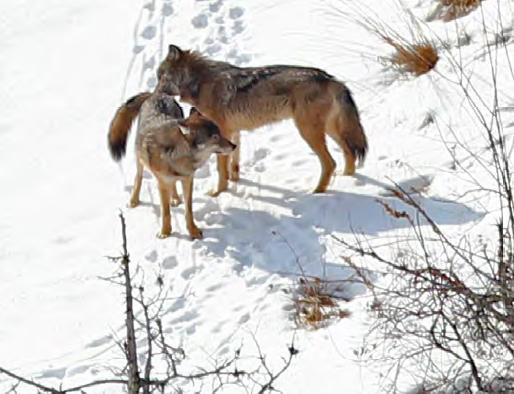

Kruuk H (1972) Surplus killing by carnivores. Krebs CJ, Boutin S, Boonstra R (2001) Ecosystem dynamics of the boreal forest: the Kluane project. Juliano SA (1989) Queuing models of predation and the importance of contingent behavioural choices for optimal foragers.

Jost C, Devulder G, Vucetich JA, Peterson RO, Arditi R (2005) The wolves of Isle Royale display scale-invariant satiation and density dependent predation on moose. Johnson DM, Akre BG, Crowley PH (1975) Modeling arthropod predation: wasteful killing by damselfly naiads. Holling CS (1966) The functional response of invertebrate. Haberl W (1998) Prey handling times and partial prey consumption in five species of European shrews (Soricidae, Insectivora). Griffiths D (1982) Test of alternative models of prey consumption by predators, using antlion larvae. Gillisa DM, Pikitchb EK, Petermanc RM (1995) Dynamic discarding decisions: foraging theory for high-grading in a trawl fishery. University of Chicago Press, Chicago, pp 161–191 In: Mech LD, Boitani L (eds) Wolves: behavior, ecology, and conservation. Can Field-Nat 96:87–88įuller TK, Mech LD, Cochrane JF (2003) Wolf population dynamics. Fauna Flora 69:203–211Įide SH, Ballard WB (1982) Apparent case of surplus killing of caribou by gray wolves. J Mammal 79:227–235Įhrlinge S, Bergsten B, Kristiansson B (1974) The stoat and its prey: hunting behavior and escape reactions. Theor Popul Biol 56:65–75ĭelGiudice GD (1998) Surplus killing of white-tailed deer by wolves in north-central Minnesota. J Anim Ecol 47:529–547Ĭosner C, DeAngelis DL, Ault JS, Olson DB (1999) Effects of spatial grouping on the functional response of predators. Limnol Oceanogr 11:346–354Ĭook RM, Cockrell BJ (1978) Predator ingestion rate and its bearing on feeding time and the theory of optimal diets.

Theor Popul Biol 9:129–136Ĭhen X, Dickman CR, Thompson MB (2004) Selective consumption by predators of different body regions of prey: is rate of energy intake important? J Zool 264:189–196Ĭhew MK, Laubichler MD (2003) Natural enemies: metaphor or misconception? Science 301:52–53Ĭonover RJ (1966) Factors affecting the assimilation of organic matter by zooplankton and the question of superfluous feeding. J Wildlife Manage 47:963–976Ĭharnov EL (1976) Optimal foraging, the marginal value theorem. Harvard University Press, CambridgeĬarbyn LN (1983) Wolf predation on elk in riding mountain national park, Manitoba. Springer, New YorkĬalder WA (1984) Size, function, and life history. University of Chicago Press, Chicago, pp 317–340īurnham KP, Anderson DR (2010) Model selection and multi-model inference: a practical information-theoretic approach. J Mamm 57:585īoitani L (2003) Wolf conservation and recovery. Philos T Roy Soc Lond B 357:1233–1248ījärvall A, Nilson E (1976) Surplus-killing of reindeer by wolves. Am Nat 120:382–390īayliss P, Choquenot D (2002) The numerical response: rate of increase and food limitation in herbivores and predators. We explore how the typical portrayal of PPC by wolves has been not only misleading but also detrimental to conservation by promoting negative attitudes toward wolves.Ībrams PA (1982) Functional responses of optimal foragers. Previous theoretical assessments indicate that if PPC represents an optimal foraging strategy and is not caused by physiological limitations, then mean carcass utilization is negatively correlated with mean kill rate and the utilization of individual carcasses is uncorrelated with time between kills. We present the first strong test for the cause of PPC in a cursorial vertebrate predator with intestinal digestion: wolves ( Canis lupus) feeding on moose ( Alces alces). Assessments that clearly distinguish between these causes are rare and have been conducted only for invertebrate species that are ambush predators with extra-intestinal digestion (e.g., wolf spiders). Alternatively, PPC may represent an optimal foraging strategy. PPC may arise from physiological constraints to gut capacity or digestive rate. For a wide range of taxa, partial prey consumption (PPC) is a frequent occurrence.


 0 kommentar(er)
0 kommentar(er)
